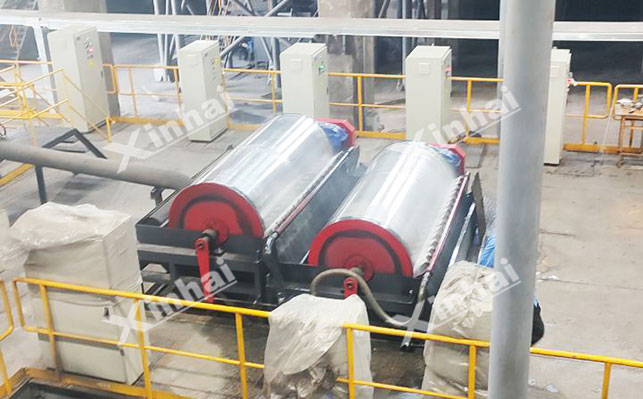If you want to know more information (such as product/process price, etc.), please contact us 24-hour telephone
Silica (SiO₂) is used as a key raw material in modern industrial systems and is widely used in a variety of applications, including electronics, photovoltaics, and construction. The process of extracting pure silicon from natural silica ores is complex and delicate, involving several key steps. In this article, we will analyze the core process of silica extraction and processing to help you grasp the opportunities of this important industry chain.
1.Mining
Silicon ore mining is primarily conducted through open-pit or underground mining. Open-pit mining is suitable for shallow deposits with good continuity, offering advantages of low costs and high efficiency. Underground mining is used for deeper deposits and requires more advanced technology.
2.Crushing
The large ore blocks extracted need to be crushed initially to facilitate transportation and subsequent processing. Equipment like jaw crushers plays a crucial role in this stage, breaking down the ore into manageable sizes.
1.Multi-stage Crushing System
A multi-stage crushing process is used to break down the ore to the target size. Primary crushing typically uses jaw crushers to break the ore into 100-200 mm pieces. Secondary crushing uses cone crushers to further reduce the size to 10-30 mm. Finally, high-pressure grinding rolls or similar equipment are used to finely crush the ore to 0.5-2 mm, creating favorable conditions for subsequent grinding and flotation.
2.Screening Operations
Screening is an essential method to ensure that the ore meets the required grain size specifications. Vibrating screens are used to separate different grain sizes, achieving precise grain size control and enhancing the efficiency of subsequent flotation processes.

Grinding involves reducing the ore to micron-sized particles to ensure complete liberation of silicon ore particles. Ball mills and rod mills play key roles in this process. By precisely controlling grinding time and media ratios, ideal silicon ore fine products can be obtained, laying the foundation for subsequent refining processes.
1.Gravity Separation Technology
Gravity separation is based on differences in mineral particle density, effectively removing denser impurity minerals like hematite and galena. Equipment such as jigging machines and shaking tables optimize separation by adjusting parameters like feed quantity and water pressure.
2.Magnetic Separation Technology
Magnetic separation is used to remove magnetic impurities like magnetite. Permanent magnetic drum separators separate magnetic minerals from non-magnetic ones under magnetic field action, offering simplicity and cost-effectiveness.
3.Flotation Technology
Flotation separates minerals based on surface property differences by adding collectors and frothers. In silicon ore flotation, it effectively removes non-magnetic impurities like mica and feldspar. Intelligent flotation systems can automatically adjust reagent dosage and aeration volume based on pulp properties, enhancing flotation efficiency.
1.Chemical Treatment
Chemical treatment is a crucial step in silicon ore refining. Chemicals like hydrofluoric acid react with impurity minerals to form soluble compounds, allowing for impurity separation. This process requires strict control of reaction conditions to ensure silicon recovery and purity.
2.Smelting Process
Smelting involves melting silicon ore at high temperatures to remove impurities. Electric arc furnaces are widely used, allowing for precise temperature control and operation to produce high-purity silicon products that meet various industrial demands.
1.Siemens Process
The Siemens process is a primary method for producing high-purity silicon. It uses chemical vapor deposition (CVD) technology to deposit silicon from silicon-containing gases onto a substrate at high temperatures. The silicon produced can reach a purity of 99.9999%, meeting the stringent requirements for semiconductor devices and integrated circuits.
2.Metallurgical Grade Silicon Production
Metallurgical grade silicon is produced by smelting silicon ore in an electric arc furnace with carbon-based reducing agents. This process yields silicon widely used in casting and alloy production.
1.Further Purification
To meet the extreme purity requirements of the electronics industry, techniques like zone melting are used to further purify silicon. These methods effectively remove trace impurities, enhancing purity to electronic-grade standards.
2.Shaping and Processing
High-purity silicon is processed into required shapes, such as silicon rods or wafers, which is a critical step in silicon material production. Techniques like crystal pulling and slicing are applied, allowing for precise control of process parameters to achieve high dimensional accuracy and stable quality. This provides excellent raw materials for downstream manufacturing.
The above describes the entire process of extracting high-purity silicon from silicon ore. The degree of purification depends on the industrial application. In practical production, the mining process should be tailored based on product use and ore properties. If you have needs related to silicon sand purification, please contact us.